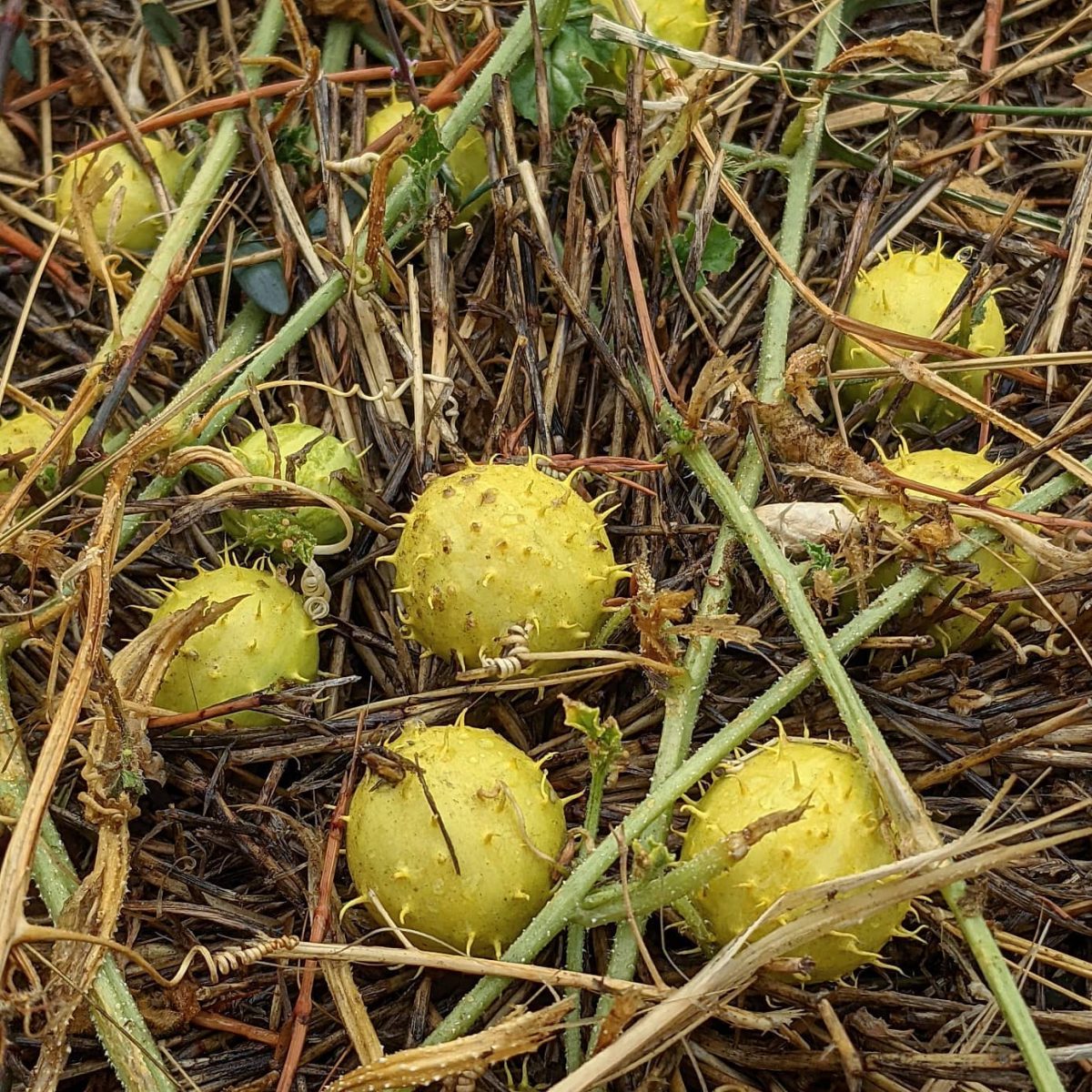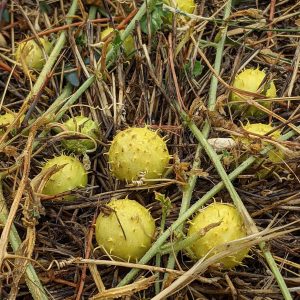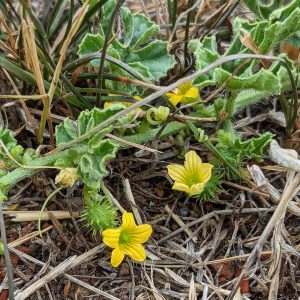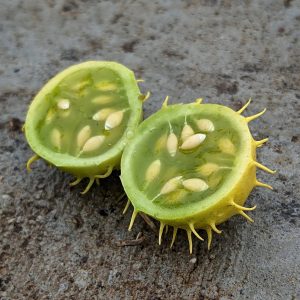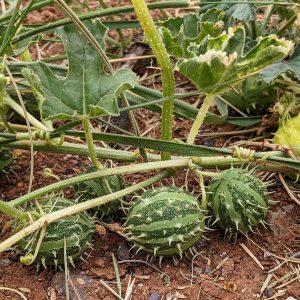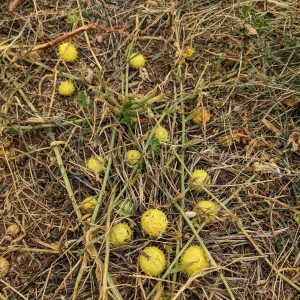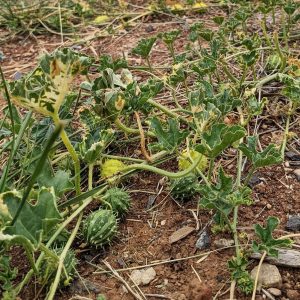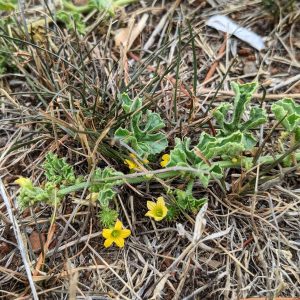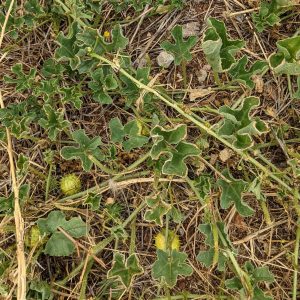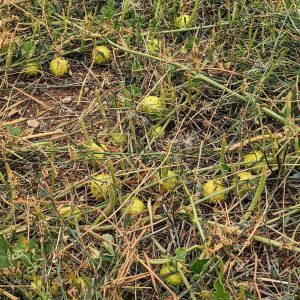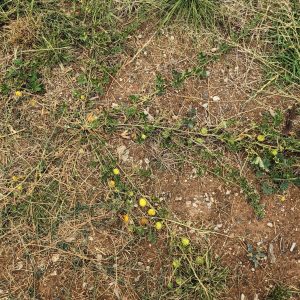Prickly Paddy Melon (Cucumis myriocarpus) a bitter Southern African cucumber producing a myriad of tiny fruit.
von Mueller made the first Australian collection of Paddy Melon on the Torrens River above Adelaide in 1851, perhaps introduced with sheep from the Cape Colony. Recent genetic analysis suggests this only occurred once.
Early press confused various exotic and native cucurbits, however Paddy Melon, bitter, covered in tiny prickles, and at least somewhat toxic, is the most likely referent for reports of livestock harmed by ‘wild melon’.
In Adelaide, an 1871 poisoning of 30 sheep near Kapunda SA triggered a scandal and panic when a string of food poisonings were attributed to sale of mutton from the stricken herd. 200 head of sheep were said to have been poisoned on the Murray in 1874.
Spread along stock routes into the Riverina, the dramatic expansion of the plant’s hold on the land was attributed to overstocking and the introduction of rabbits. ‘The melon plant seems to flourish and increase in the most exposed country and in the poorest of the soil, and being untouched in the sheep paddocks either by rabbits or sheep it continues to spread without let or hindrance.’
By 1895, it was described as ‘grow[ing] plentifully on the Darling, the Werribee, and the Loddon’ and had become infamous there for blinding or killing horses. Formal experiments rarely reproduced these effects; while some animals that gorged on the plants ended up dead from intestinal blockages, the purported blindings appear never to have been substantiated.
In Victoria, 1887 and 1889 collections were made north of Dimboola, and in 1892 north-east of Pyramid Hill. Within the metropolitan, it was collected at Braybrook in 1899, at Altona in 1903 and 1906, and Bacchus Marsh in 1911.
A weed in a Toorak vegetable garden in 1960, Paddy Melon was also found on the margins of the Calder in 1964. Survey records found it at Altona, Laverton and Bacchus Marsh in the 1980s, at Sunbury in the 1990s, and at Truganina in the 2000s, where the photographed plants retain a foothold on road medians.
View Original Post on Instagram
Search for information about Cucumis myriocarpus in the Flora of Victoria
View information and occurrences of Cucumis myriocarpus on the Atlas of Living Australia
